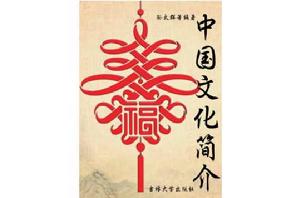內容簡介
《中國文化簡介》主要內容簡介:20世紀下半葉以來,經濟全球化所導致的文化和語言的全球化已成為勢不可擋的一股潮流。在全世界5(300多種語言中,英語已成為一種多國、多文化、多民族、多功能的世界通用語言。哲學家海德格爾說:“語言是存在之居所。”語言學家錢冠連認為:“語言是人類最後的家園。”那么,在我們的存在之居所、精神之家園中,民族文化如何傳承?大學應擔負何種使命?我國高校英語教育到底又該如何切入與發展呢?
全球化是當今時代最重要的社會現象,也是每一個國家和民族都必須面對的現實。在英語國際化的背景下,如何合理地設定英語課程,直接關係到國家外語方針的貫徹、人才培養目標能否實現等問題。以色列著名語言學家BernardSpolsky認為,亞洲各國應根據本土實際情況來制定教學目標和方針。他說:“在全球化的進程中,亞洲各國要根據各自的實際情況來制定符合本國英語教學和其他重要語言教學的目標和方針……過去人們總是以英美國家的教學目標和方針作為藍本,現在我們不能再這樣做了。英美國家無權,也不可能決定亞洲各國應該怎么教英語……現在將英語作為第二語言或外語的人群要比將英語當成第一語言的人群大得多……各國國情不同,使用英語的目的也不盡相同,根據國情來制定本國的教學目標和方針才是明智的……”(鄭新民,2006:77)新加坡前任聯合國大使說:“在國外,當開口講英語的時候,我希望我的同胞能輕易地辨認出我是新加坡人。”
長期以來,我國的英語教育撇開母語及母語文化而獨行,無論是英語教育大綱的制定者,還是外語教育工作者,對母語及母語文化在外語教學中所起的作用都缺乏足夠的認識,過多地強調母語在英語學習中的負遷移,錯誤地認為英語學習就是要擺脫母語的影響。事實上,語言是有共性的,世間萬物之間既有矛盾的一面,又有統一的一面。語言的共性決定了母語既是英語學習不可缺少的基礎,又是可以利用的資源之一,這也是英語學習中母語正遷移的作用所在。
目錄
Chapter One China in General and Its Symbol
1.1 A Brief Introduction of China
1.2 Great Symbol Dragon (Long)
Exercise One
Chapter Two Ancient Chinese ttistory
2.1 Prehistoric Times
2.2 Xia, Shang and Zhou Dynasties
2.3 Spring and Autumn Period and Warring States Period
2.4 Qin Dynasty
2.5 Han Dynasty
2.6 Three Kingdoms
2.7 Jin, Southern and Northern Dynasties
2.8 Sui and Tang Dynasties
2.9 Five Dynasties and Ten Kingdoms
2.10 Song Dynasty
2.11 Yuan, Ming and Qing Dynasties
Exercise Two
Chapter Three Modern and Contemporary Chinese History
3.1 Republic of China
3.2 People's Republic of China
Exercise Three
Chapter Four Chinese Philosophy and Religions
4.1 Philosophy
4.2 Religions
Exercise Four
Chapter Five Chinese Language, Characters and Inventions
5.1 Language
5.2 Characters
5.3 Four Great Inventions
Exercise Five
Chapter Six Chinese Literature
6.1 Mythology
6.2 Legends
6.3 Literature of Pre-Qin Period
6.4 Literature o~ Han Dynasty
6.5 Literature from Tang and Song to Yuan Dynasty
6.6 Fiction in Ming and Qing Dynasties
6.7 Modern and Contemporary Literature
Exercise Six
Chapter Seven Chinese Art
7.1 Calligraphy and Painting
7.2 Opera
7.3 Music and Dance
7.4 Handicraft
Exercise Seven
Chapter Eight Chinese Architecture
8.1 Development of Chinese Architecture
8.2 Classifications of Chinese Architecture
8.3 General Features of Chinese Architecture
8.4 Unique Architecture in China
Exercise Eight
Chapter Nine Chinese Clothing and Diet
9.1 Traditional Dress
9.2 Modern and Contemporary Clothing
9.3 Wine and Alcohol
9.4 Tea
9.5 Food and Food Culture
Exercise Nine
Chapter Ten Popular Traditional Chinese Festivals
10.1 Spring Festival
10.2 Lantern Festival
10.3 Tomb-Sweeping Day
10.4 Dragon Boat Festival
10.5 Double Seventh Festival
10.6 Mid-Autumn Festival
10.7 Double Ninth Festival
Exercise Ten
Chapter Eleven An Overview of Chinese Education
11.1 Ancient Chinese Education
11.2 Today's Chinese Education
Exercise Eleven
Supplementary Reading An Overview of Putian City
Appendix 1 Chronological Chart of Chinese Dynasties
Appendix 2 Map of the World
Appendix 3 Map of China
Key References
後記

